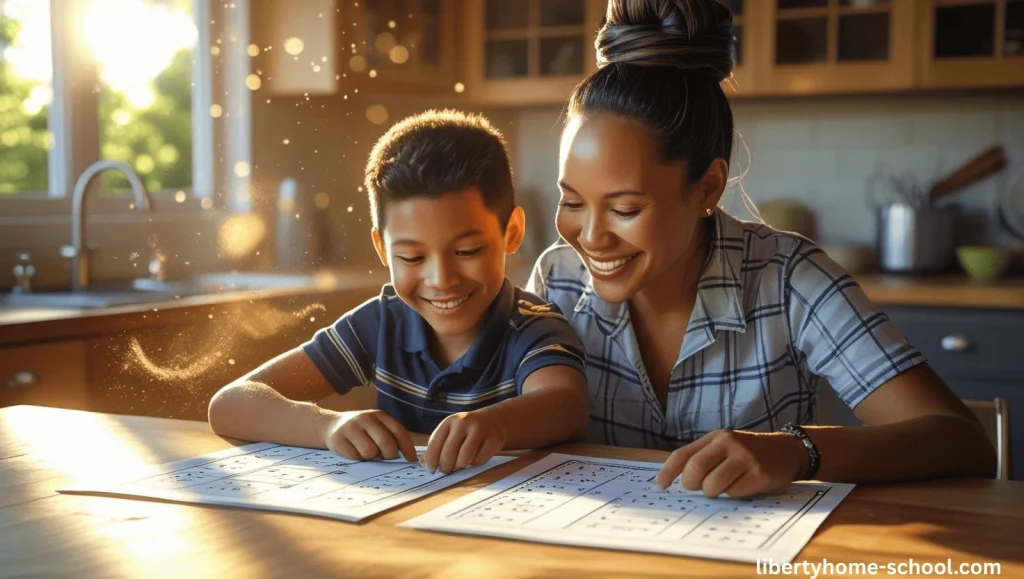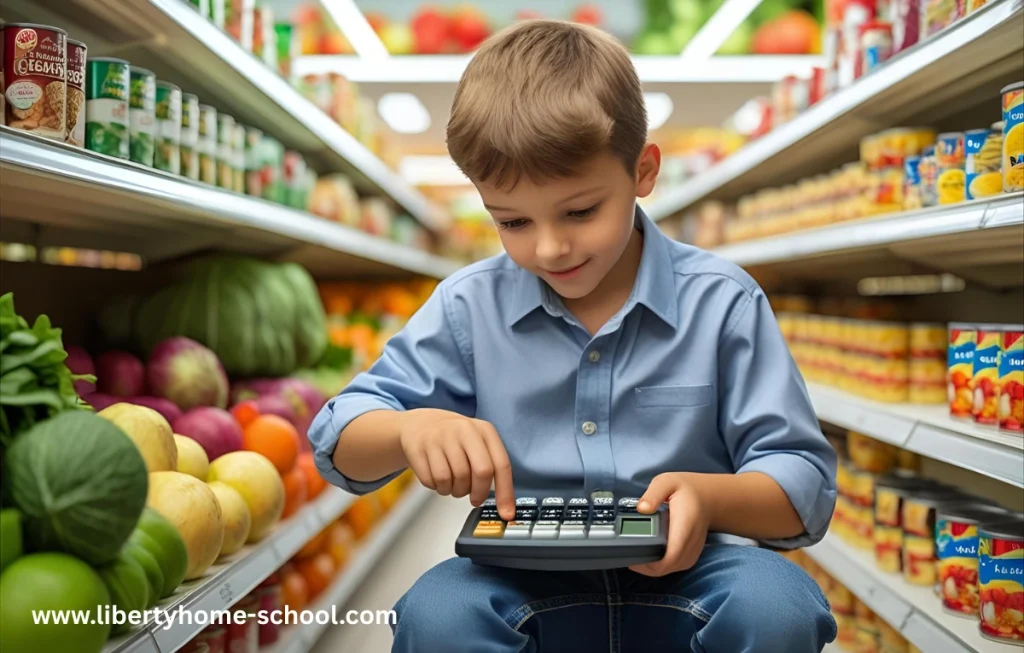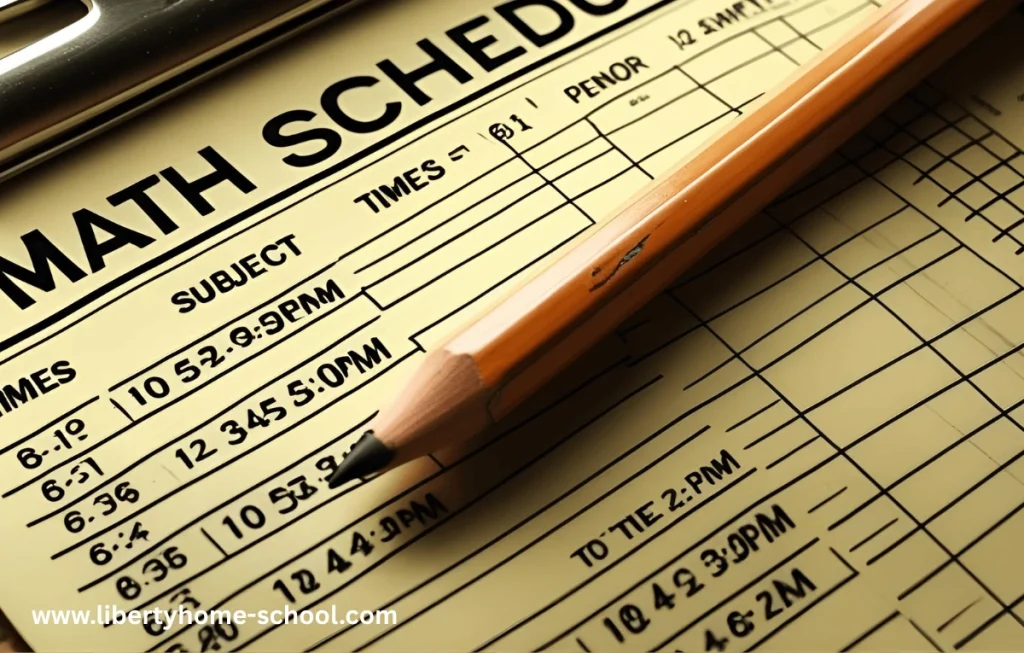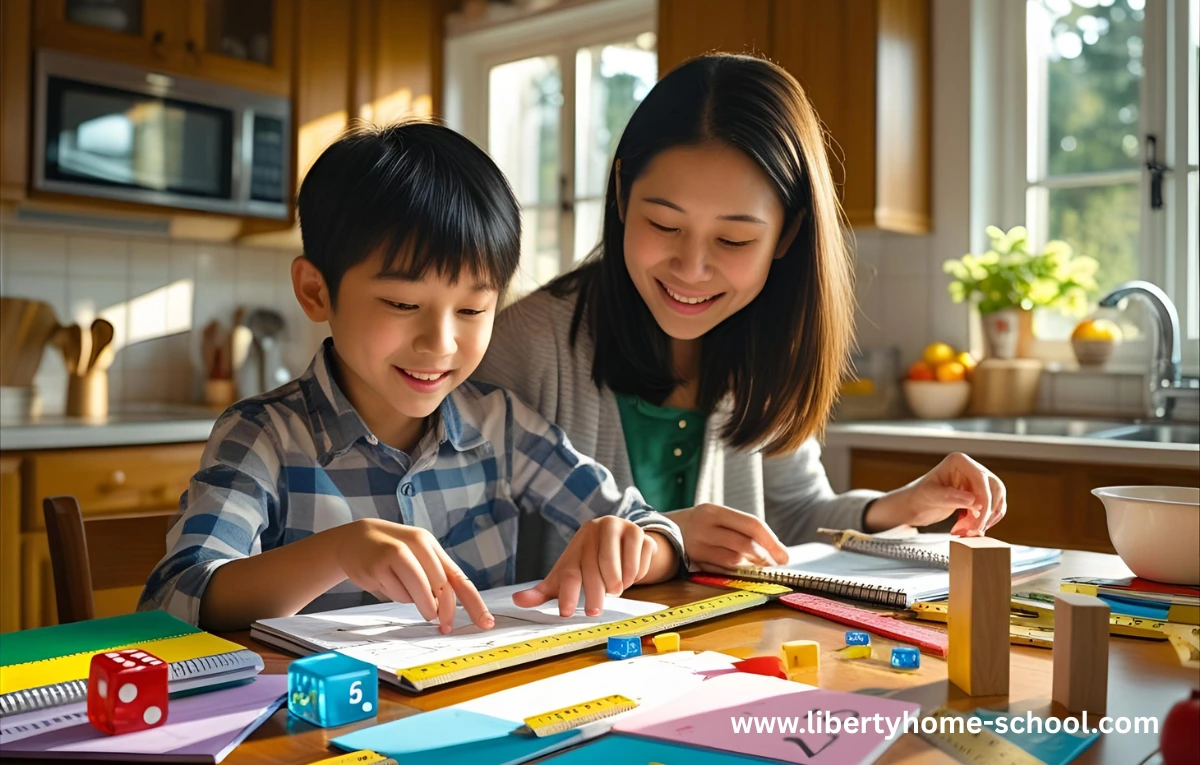Homeschool Math for 10-Year-Olds: A Heartfelt Guide for Moms

“Math time = tears. I just want to help without making it worse.”
Hey there, Mama! If you’ve found yourself saying this, you’re definitely in the right spot.
Teaching math to your 10-year-old at home can feel like a daunting task. The concepts start to get more complex, your child’s confidence might dip, and the pressure can really start to pile up. But take a moment to breathe—you’re not in this alone. And the best part? You’ve got what it takes to make it work—with love, creativity, and a dash of fun.
So, let’s navigate this journey together—mom to mom. ❤️
Why Is 10 a Crucial Age for Math Learning?

Age 10 is a turning point. Kids are stepping into more abstract thinking, and suddenly, math isn’t just numbers—it’s logic, patterns, and real-world applications. Here’s why this age matters:
- Understanding abstract concepts begins here: Fractions, long division, decimals—these aren’t easy. 10-year-olds are shifting from concrete thinking to more symbolic reasoning.
- Pressure to meet grade-level benchmarks: Parents start to worry about “falling behind”—but ”don’t stress! Every child grows at their own pace.
- Building confidence before middle school: Now’s the time to help them feel smart in math, so they don’t carry fear into the upper grades.
Pain Points Most Moms Face (You’re Not Alone ❤️)

If you’ve said any of these aloud (or cried in the bathroom after math time)… You’re in very good company.
- “My child hates math.”
- “I don’t know how to explain long division!”
- “Worksheets alone aren’t helping.”
- “We both cry by the end of the lesson.”
You’re not failing. You’re facing real challenges with love and intention. And now—let’s bring in joyful solutions.
Simple, Loving Ways to Teach Math Daily
You don’t need to be a certified teacher. Just a curious mom ready to weave math into daily life. Here’s how:
Use Cooking to Teach Fractions and Measurement

- Ask your child to measure ½ cup of sugar or ¾ tsp of baking soda.
- Let them halve or double a recipe (real-world fraction multiplication!).
- Talk about time and temperature: “The cookies bake for 15 minutes at 350°F. What time will they be done?”
Grocery Store Budgeting Game

Next shopping trip, turn your cart into a classroom:
- Give your child a $10 challenge: “Buy ingredients for sandwiches under $10.”
- Ask them to compare prices: “Which cereal is cheaper per ounce?”
- Use coupons, track savings, and talk about unit price vs. total cost.
Real math. Real decisions. Real confidence.
Story-Based Word Problems

Make your child the hero of the story:
“Emma the Explorer has 24 apples. She needs 3 baskets. How many apples go in each one?”
Even better—use their obsessions:
- Pokémon Math: “Pikachu earned 120 XP in 3 battles. How much per battle?”
- Minecraft Math: “If a block is 1 cubic meter, how many blocks fit in a 3x3x3 house?”
Let them draw it out—math comics = magic.
XtraMath & Digital Tools That Actually Help
Screen time doesn’t have to be a battle. The right apps can reinforce concepts in a fun way—without replacing you.
⏱ What Is XtraMath & Why Moms Love It
- Just 10 minutes a day builds number fluency.
- It adapts to your child’s level.
- Great for math fact mastery without the fuss.
➡️ Tip: Use XtraMath before breakfast while sipping cocoa. It becomes a calm ritual.
Other Fun Math Apps & Games
- Prodigy: Adventure game + curriculum-aligned math
- Khan Academy Kids: Gentle and free
- SplashLearn: Colorful, engaging activities for grades K–5
💡 Let these be a math treat—not a chore. Motivation boosts when learning feels like play.
When to Use Paper, When to Use Screens
- Use paper for deep thinking: long division, problem-solving, drawing visuals
- Use screens for fluency: math facts, review, games
Balance = better brain development. Printables still have power!
Real-Life Math Projects (Love-Packed Learning)
Math makes more sense when it means something. Try these heart-driven project ideas.
Create a Lemonade Stand Business Plan
- Budget for lemons, sugar, cups, signs
- Set a price: “If it costs 50¢ per cup and we sell for $1, what’s the profit?”
- Keep track of sales and make bar graphs for fun
Let them name the stand. Add glitter. Invite neighbors. Math = joy.
Plan a Dream Vacation Together
- Pick a destination: Disney? Dubai? Dinosaurs?
- Research airfare and hotel costs together
- Calculate budgets for food, transport, souvenirs
They won’t even notice they’re doing division and multiplication.
DIY Home Décor with Measurements
Rearrange their room.
- Measure furniture with tape
- Graph out the space
- Design wall art using geometry shapes
Paint, cut, tape = hands-on math magic.
🗓 Daily Homeschool Math Routine (Sample)

Here’s a gentle, doable schedule you can tweak:
Morning Math Warm-Up (10 mins)
- Flashcards or skip counting
- Quick XtraMath session
Set a positive tone early!
Hands-On Activity (20–30 mins)
Pick one:
- Bake something
- Do a project
- Grocery math
- App-based game
They’ll forget they’re “doing math.”
Calm Down With a Math Story (10 mins)
- Read a math picture book (like Sir Cumference, Math Curse, or Anno’s Counting Book)
- Discuss over tea or a snack
Math + bonding = lasting memories
Tips for Moms Doing It All
📘 You Don’t Have to Be a Math Expert
Say:
“I don’t know either—let’s figure it out together!”
Your curiosity matters more than credentials. Be their learning partner, not just their teacher.
🌱 Focus on Progress, Not Perfection
- Celebrate every step. “You tried 3 times before you got it—wow!”
- Let go of what other kids are doing
- Growth looks different for everyone
💖 Your child is growing beautifully—even on the hard days.
🎶 Build Joy Into the Journey
- Play music during math
- Use stickers or smiley faces for effort
- Create a “Math Wins” wall
Let your child feel successful—the results will follow.
✨ Best Math Topics for 10-Year-Olds (Free Worksheets)
| Topic | What Kids Learn | Download Link |
|---|---|---|
| Place Value | Identify digit values up to 10,000 | |
| Addition & Subtraction | Add and subtract 4-digit numbers | |
| Multiplication | Multiply 2-digit × 1-digit or 2-digit numbers | |
| Division | Simple division using long and short methods | |
| Fractions | Add and subtract basic fractions like ½ + ¼ | |
| Decimals | Learn tenths & hundredths with simple problems | |
| Word Problems | Solve real-life math problems using 4 operations | |
| Geometry | Identify angles, triangles, and common 2D shapes | |
| Measurement | Convert cm, grams, and liters easily | |
| Time & Money | Read clocks, count coins, and solve simple budgets |
Sections include:
- ✅ Today’s Date
- 🧠 Morning Warm-Up (Circle: XtraMath / Flashcards / Skip Counting)
- 🛠 Main Activity
- 💡 What I Learned Today
- 😄 One Fun Math Moment
- ✍️ Parent Notes/Stickers
Design: Stars, hearts, and icons like apples and books—cheerful and motivating. Great for building a daily math habit.
Final Words from One Mom to Another

Mama, your child doesn’t need a perfect homeschool.
They need you—showing up with love, curiosity, and patience.
Even on messy days, when the fractions flop and tempers rise, you’re still laying a foundation of trust, love, and lifelong learning.
You’re not failing.
You’re leading with heart. 💗
And that, dear Mom, is everything.
Bonus Learning Beyond Math
Bonus Learning Beyond Math
Homeschooling isn’t just about numbers—it’s about nurturing curious, confident learners. While your child enjoys these hands-on math lessons, encourage creativity by exploring creative art projects for kids. Also, keep the learning going with some fun summer learning activities to make the most of the season. If you’re looking to bring that same hands-on, heart-led approach to other subjects, don’t miss this mom-approved guide: Social Studies Activities for 10-Year-Olds—packed with real-life projects your child will actually enjoy!
💬 FAQs (Real Questions from Real Moms)
Q1: How much math should my 10-year-old do each day?
Aim for 30–45 minutes, including warm-ups, the main activity, and discussion.
Q2: What if I don’t understand the new math methods?
That’s okay! Watch YouTube tutorials together or check Khan Academy.
Q3: Should we use a formal curriculum?
If it helps you stay consistent, yes. But real-life math + printables can also work well!
Q4: My child is behind. Should I worry?
Focus on progress. One loving step at a time leads to growth.
Q5: Can games replace math worksheets?
Games reinforce learning. Pair them with real practice for balance.
Q6: What’s the best way to explain long division?
Use visual aids—blocks, drawings, or divided cookies on a plate.
Q7: What if my child refuses to try?
Take a break. Come back with a game or story. Pressure kills learning.
Q8: Is math anxiety real in kids?
Yes, and it’s common. Empathy and hands-on fun help reduce it.
Q9: Can I teach math with just life skills?
Absolutely. Cooking, budgeting, and play can teach so much.
Q10: Where can I find more printables?
Right here on our blog—we add new ones monthly! 🧡

